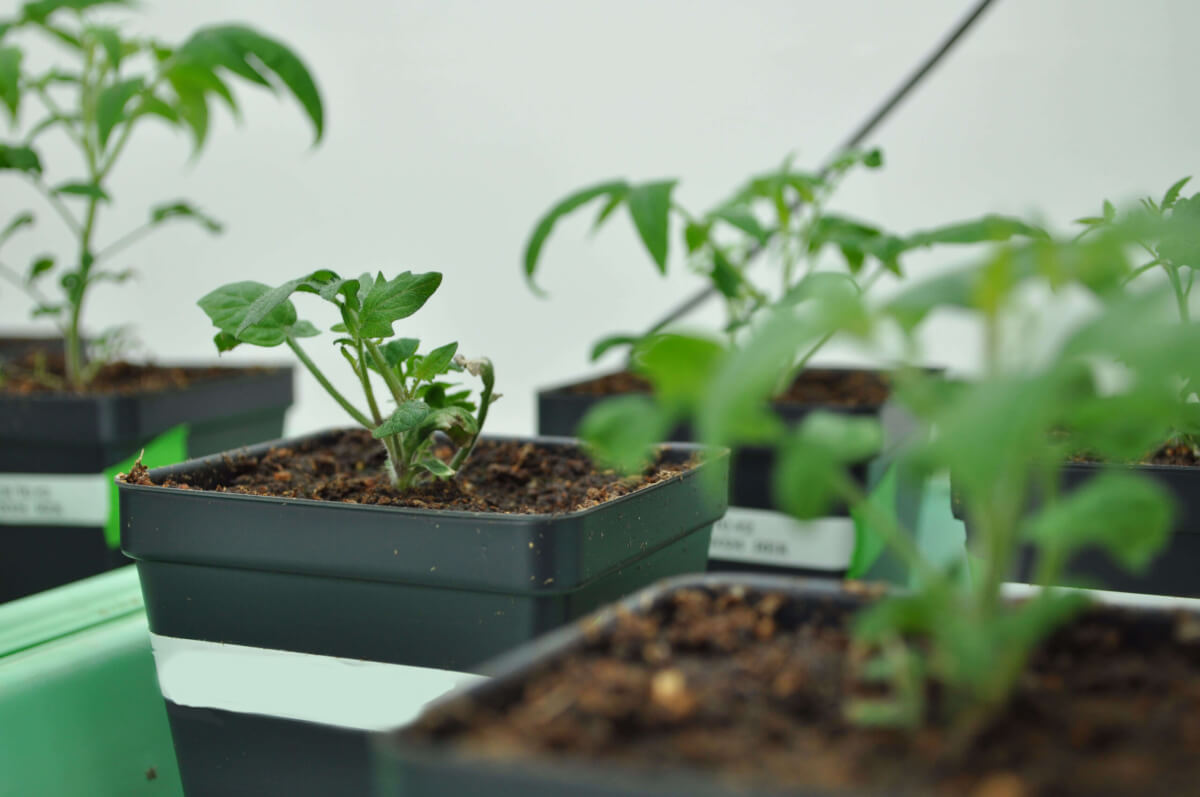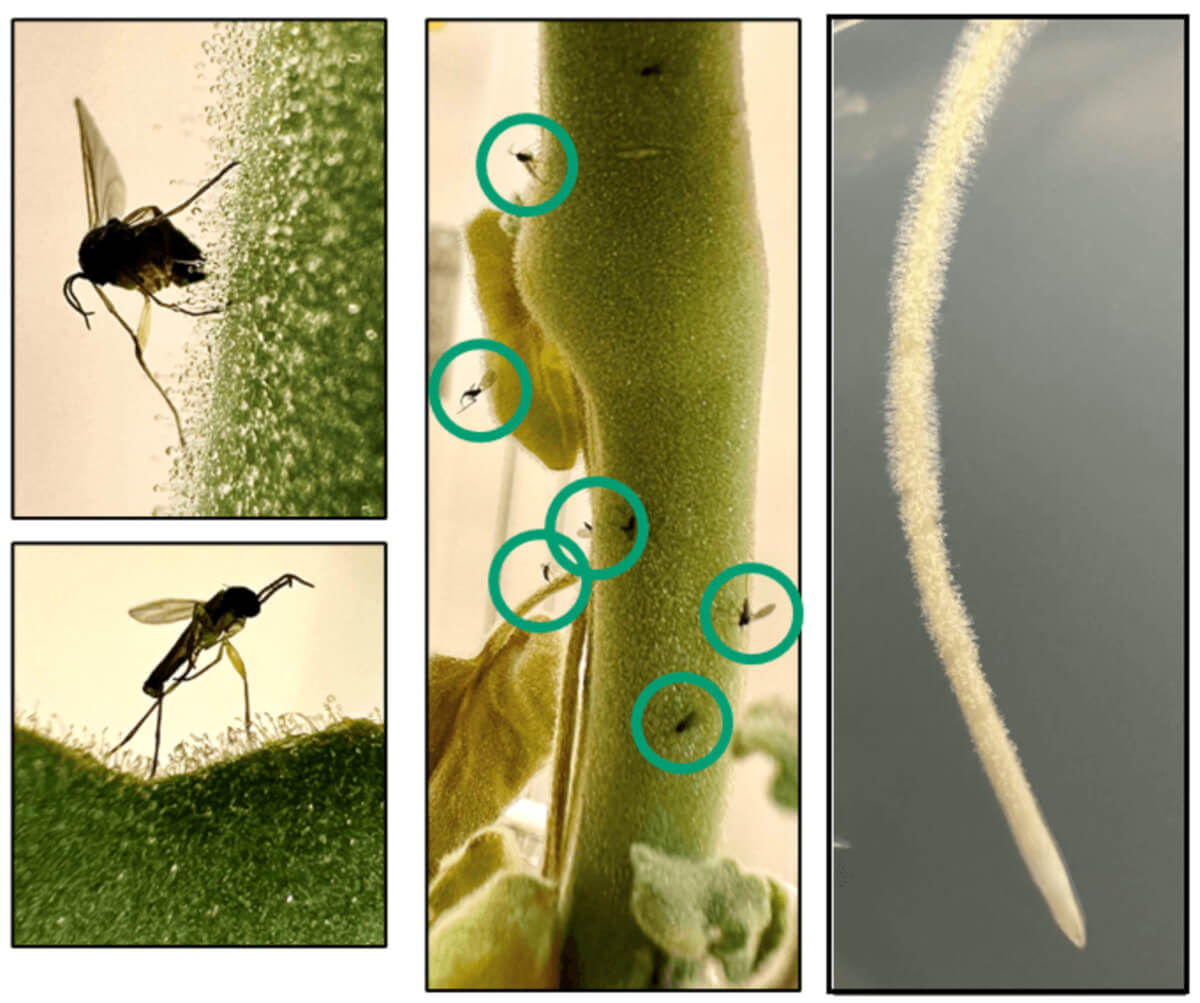EAST LANSING, Mich. — In what seems like it came out of “Star Trek” or a Marvel movie, scientists have discovered that tomatoes essentially live in a “parallel universe.” This discovery was made as Michigan State University researchers watched what happens among the roots of tomato plants.
In the new study, published in the journal Science Advances, researchers found that tomato roots produce a unique class of metabolites called acylsugars. These compounds were previously thought to be made only in the fuzzy hairs on the surface of tomato leaves and stems, known as trichomes.
Acylsugars are specialized molecules consisting of sugar cores decorated with fatty acid chains. In tomato trichomes, these metabolites help defend the plant against pests. However, the root acylsugars turned out to be quite different from their aboveground counterparts.
Using advanced analytical chemistry techniques, scientists determined that the most abundant acylsugar in tomato roots has a sugar core made of glucose linked to inositol, rather than the sucrose core found in trichome acylsugars. The root compounds also had distinct fatty acid chains attached.
“What’s so remarkable about these specialized metabolites is that they’re typically synthesized in highly precise cells and tissues,” says first study author Rachel Kerwin, a postdoctoral researcher at MSU, in a media release.
“Take for instance acylsugars. You won’t find them produced in the leaves or stems of a tomato plant. These physically sticky defense metabolites are made right in the tip of the trichomes.”

This raised the question — are the root and trichome acylsugars made by the same metabolic pathway? To find out, researchers did some molecular sleuthing. They identified genes in tomato roots that are very similar to the known trichome acylsugar biosynthetic genes. One gene in particular, dubbed ASAT1-L, was the root-expressed cousin of the trichome gene ASAT1.
Scientists then used CRISPR gene editing to knock out ASAT1 and ASAT1-L function. Strikingly, tomato plants lacking ASAT1-L produced no detectable acylsugars in their roots, while trichome acylsugar levels were unaffected. The reverse was true when ASAT1 was knocked out. This strongly suggests that tomatoes have evolved two separate acylsugar metabolic pathways — one for the trichomes, and a second one for the roots.
Digging deeper, the research team found that the trichome and root acylsugar genes are clustered close together on the tomato genome. This type of genomic organization, known as a biosynthetic gene cluster, is thought to allow the genes to be co-regulated and co-inherited.
“Alongside the aboveground acylsugar pathway we’ve been studying for years, here we find this second parallel universe that exists underground,” explains study lead author Robert Last, a researcher at MSU.
Evolutionary analysis revealed that ASAT1-L likely emerged when the ancestral ASAT1 gene got duplicated. The two genes then diverged and specialized for trichomes and roots. The story got even more intriguing when scientists looked at other tomato relatives. They discovered that ASAT1-L and root acylsugars are found in some wild tomato species but not in more distant cousins like eggplant. This implies that the ability to make root acylsugars evolved relatively recently in the tomato family tree.


What’s the purpose of these mysterious underground metabolites? The honest answer is we don’t know yet.
Given their similarity to protective trichome compounds, one possibility is that root acylsugars help tomatoes fend off soil-dwelling pests and pathogens. They may also play a role in recruiting beneficial microbes to the root zone. Future studies could shed light on their ecological functions.
“If we find that these root acylsugars are effective at repelling harmful organisms, could they be bred into other nightshades, thereby helping plants grow without the need for harmful synthetic fungicides and pesticides?” concludes Last.
“These are questions at the core of humanity’s pursuit of purer water, safer food and a reduced reliance on harmful synthetic chemicals.”
StudyFinds’ Matt Higgins contributed to this report.

